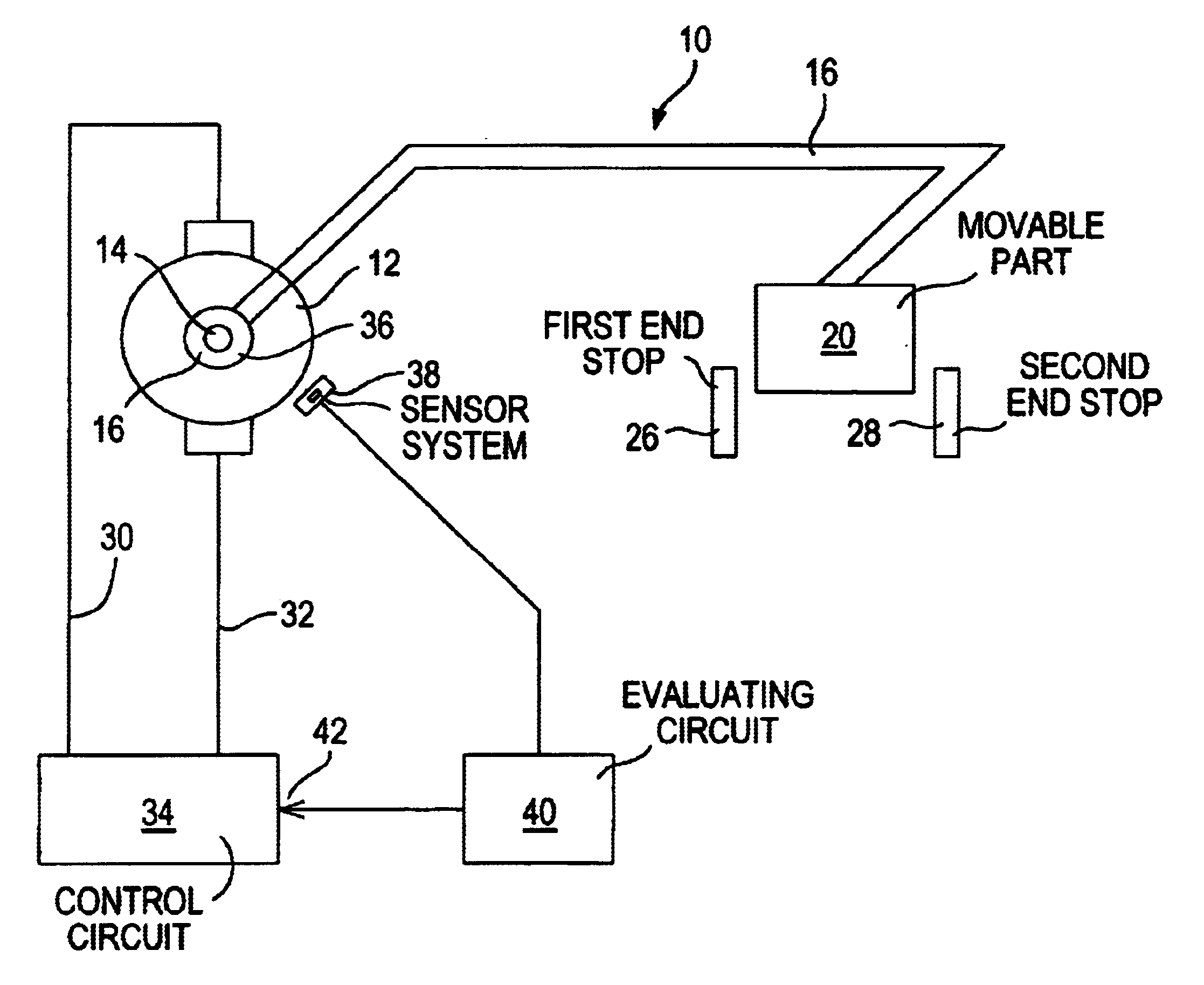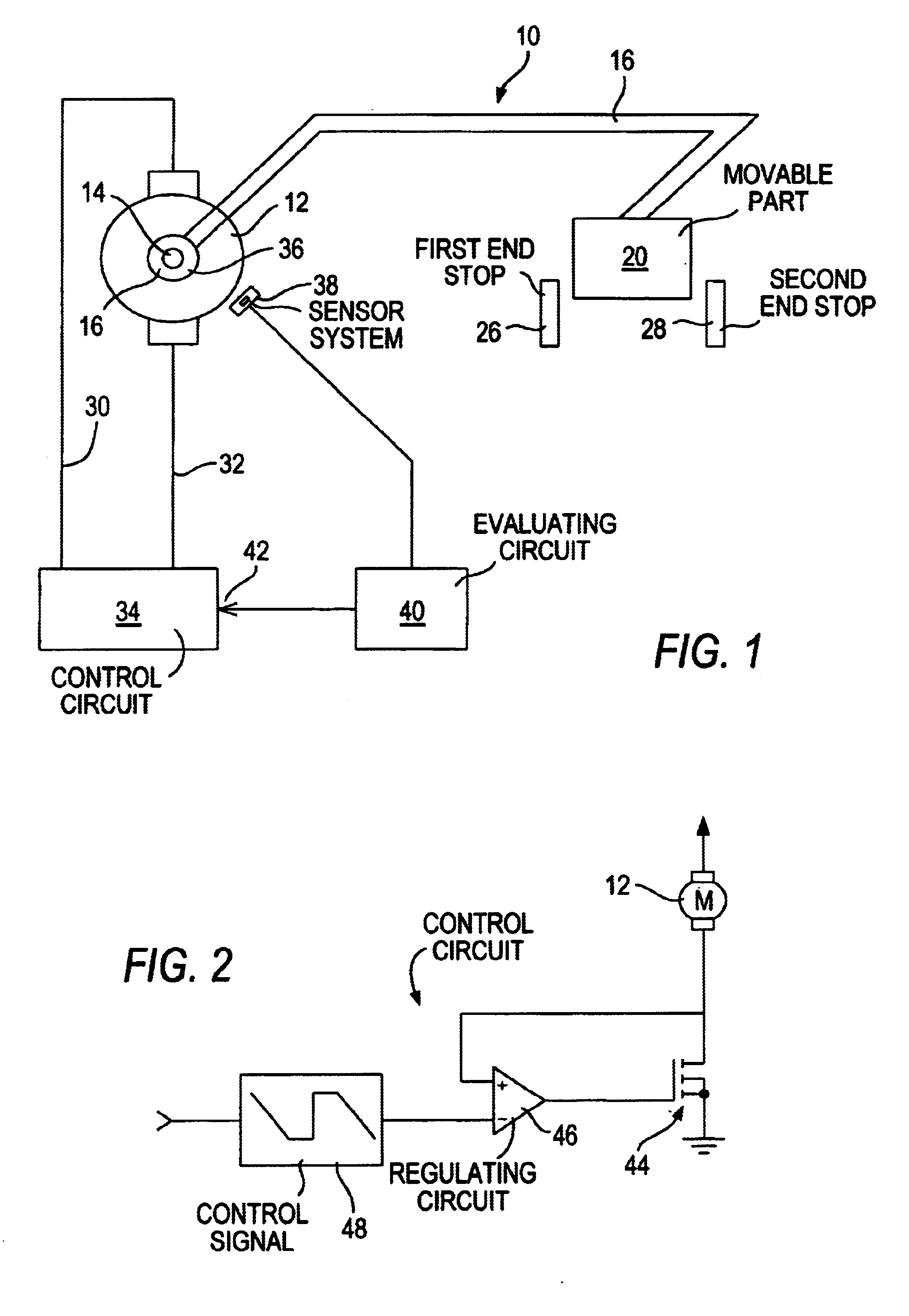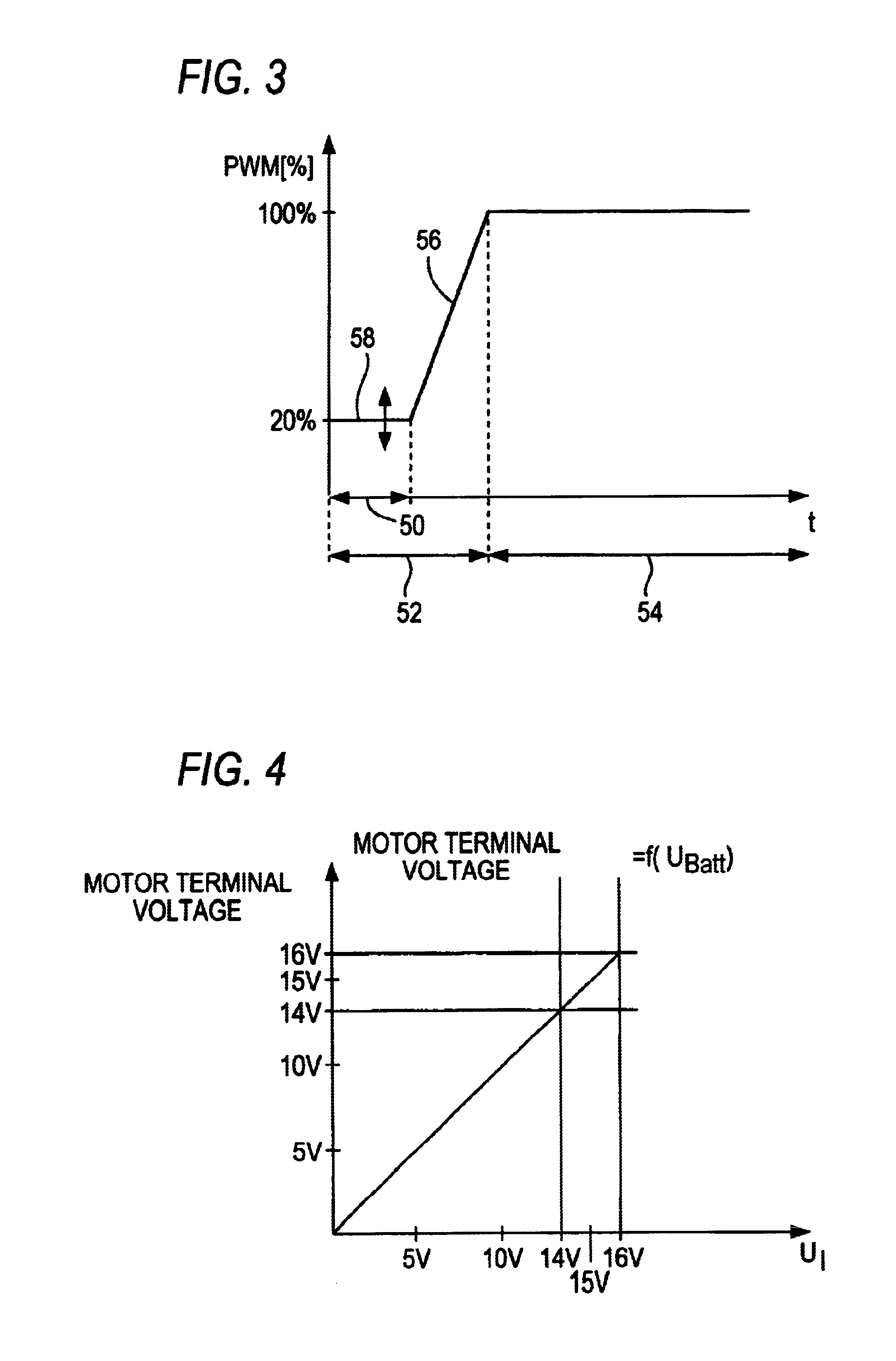Method for controlling an adjustment process of a part
a technology of adjustment process and adjustment process, applied in the direction of dynamo-electric converter control, roof, instruments, etc., can solve the problems of tripping of pin protection, complicated process, limited method,
- Summary
- Abstract
- Description
- Claims
- Application Information
AI Technical Summary
Benefits of technology
Problems solved by technology
Method used
Image
Examples
Embodiment Construction
[0024]In FIG. 1, an adjusting system 10 for adjusting a part 20 is shown schematically. The adjusting system 10 has an electric motor 12, with a drive shaft 14 that engages a gear 16 that is merely represented symbolically. The gear 16 is connected via a transmission device 18 to a part 20 to be adjusted. The part 20 can be moved back and forth by means of the electric motor 12 between a first end stop 26 and a second end stop 28. Via motor connection lines 30 and 32, the electric motor 12 is connected to a control circuit 34. The drive shaft 14 of the electric motor 12 carries at least one signal transducer 36, whose signals are detectable by a sensor system 38. The sensor system 38 is connected to an evaluation circuit 40, which in turn is connected to one input 42 of the control circuit 34.
[0025]The adjusting system 10 shown in FIG. 1 can be used for instance in adjusting power windows or power sliding roofs in motor vehicles. However, these are merely two possible uses. It is un...
PUM
 Login to View More
Login to View More Abstract
Description
Claims
Application Information
 Login to View More
Login to View More - R&D
- Intellectual Property
- Life Sciences
- Materials
- Tech Scout
- Unparalleled Data Quality
- Higher Quality Content
- 60% Fewer Hallucinations
Browse by: Latest US Patents, China's latest patents, Technical Efficacy Thesaurus, Application Domain, Technology Topic, Popular Technical Reports.
© 2025 PatSnap. All rights reserved.Legal|Privacy policy|Modern Slavery Act Transparency Statement|Sitemap|About US| Contact US: help@patsnap.com



